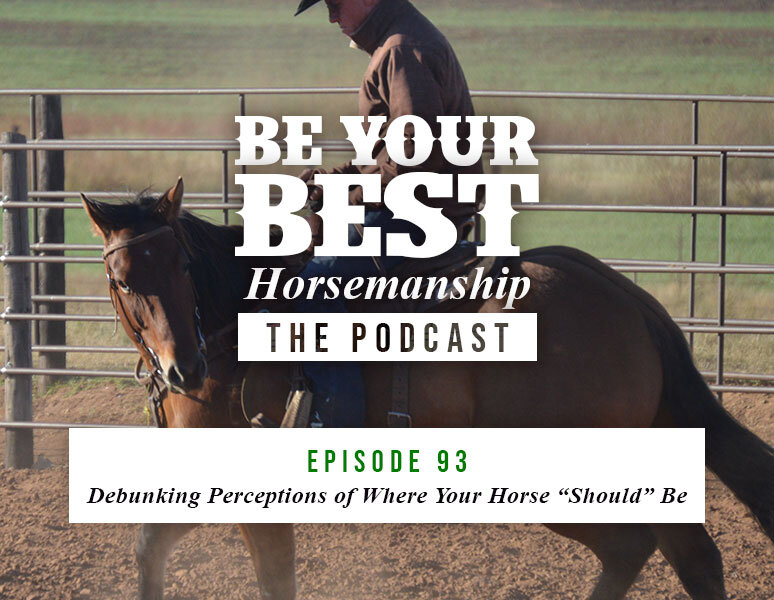Ep 93: Debunking Perceptions of Where Your Horse “Should” Be
I just got back home from my first clinic in Alaska, and this trip was truly incredible. Aside from the flight delays, the 24+ hours spent in an airport on the return trip gave me a lot of time to reflect on the clinic experience.
There was one particular comment that was made during this clinic that stood out to me:
“In Alaska, anything under the age of 6 is considered a ‘colt.’”
Our clinic host, Jenny Strausbaugh of Strausbaugh Performance Horses made this point, and I think it is worth discussing.
In my part of the world, I think most people consider a ‘colt’ to be 2-3 years old. However, in my barn, I would argue that 6 can very well still be considered a colt.
I find that a lot of people use age as the sole determinant of where a horse should be in its training career. However, there are so many more factors that should influence our perceptions and expectations of where a horse ‘should’ be by a certain age.
When you take into consideration the horse’s pedigree and training history, there can be a wide range of skill levels and abilities at the age of 2-3. However, when you compound that with factors like climate, geography, and the knowledge and skill level of the person(s) riding that horse, our expectations become a lot more fluid.
This is why I preach the principle of helping a horse reach their maximum potential. Each horse is going to have different considerations that determine what their ‘best’ is and will be.
In my barn, for example, I currently have horses ranging from 2-10 years old. And, to be honest, there are things my 2 year olds can do that the 10 year olds struggle with. Similarly, there are things the 10 year olds can do that are far beyond what my 2 year olds are mentally and physically ready for right now.
The challenge with the 10 year olds is that they have been exposed to more speed and more high-pressure situations than the 2 year olds have. When speed is added to the equation, those horses can start to slip further away from their fundamentals.
To bring them back to those fundamentals, we have to have triggers in place. A trigger is a cue that signals that horse to switch from the ‘reactive’ side of its brain to the ‘thinking’ side. For more on triggers, tune into Episode 87.
Those triggers, while they aren’t as vital at slower speeds, must be developed at slower speeds. That way, when you reach faster speeds, those triggers are already established and ready for you to implement.
The interesting thing about triggers is that they work both ways. I always talk about helping a horse transition from the reacting side of its brain to the thinking side, but I usually don’t mention the benefits of helping a horse go from the thinking side back to the reacting side.
In events like team roping or barrel racing, speed is a reactive response. Speed is essential to the horse’s performance in these events. When we drop our hands and ask our horses to leave the box or to accelerate out of a turn, that is a reactive response. We need this reactive response in order to get the most out of our run. However, once this reactive response is triggered, we have to have another cue in our toolkit that helps that horse transition back to the thinking side of its brain so that we can effectively control its speed and direction throughout the remainder of the run.
This is why training takes time. Some horses may pick up on these triggers by the age of 2-3. And, that is great. There will be some horses that don’t pick up on them until the age of 6-7. And, that is great, too.
At the end of the day, it is all about being able to develop an awareness of where your horse is at and manage your expectations accordingly.
Additionally, you must be able to develop an awareness of your own abilities and be aware of how your cues, body position, feel, balance, and timing are affecting your horse’s progress and understanding of basic fundamentals.
For more information about the fundamentals discussed in this episode, check out our Foundation to Finish online training program.
“Be Your Best Horsemanship” is brought to you by Classic Equine, Martin Saddlery, Better Horses Network, Purina, Healthycoat, CINCH, Starbar, and Clarifly. These brands have been part of the Phil Haugen Horsemanship team for many years, and their products continue to play an integral role in the success of our performance horse training program. To support these brands, visit our Sponsors tab.




